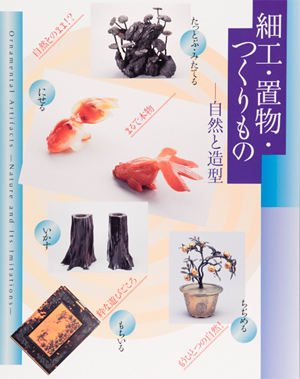| image | information |
|---|---|
 |
When one refers to “fine arts” today, we usually think of the famous paintings and sculpture of various times and places seen at museums and exhibition galleries. We are also apt to think that they were created by an artist starting from nil, and that they must be original art works which express the artist’s own personality or his internal feelings. However, in Japan, this common idea of “the fine arts”=”art”, is a comparatively new way of thinking which gradually spread during the late Meijii era, accepting the general conservative idea of Western aesthetics of the nineteenth century. The Outline of “art” was less rigid before then, and was more extensive in range. A vessel that is just a cut bamboo section, is valued as a flower vase in the Cha-no-yu tea ceremonies still in the present day. Water stones, which are presently tended to be considered more as a hobby than “a work of art”, were objects of the aesthetic appreciation, treated equally with painting and calligraphy before. Moreover though works made modeled to look the same as nature reproduced in other materials, are often considered as craftsmanship inferior to “the fine arts” now, a precise distinction was not made between these and the “artistic” sculpture works at least until a certain time in the modern era. Furthermore, as for things that are no longer recognized as art in the present day in Japan, such as various goods that are considered as “handicrafts” and “souvenirs”, they actually once had joined the group that is referred to as “fine arts”. In this exhibition we will introduce in five sections, the ornamental objects made from natural materials as they are, and various craft works in our collection which rarely get the opportunity to be displayed, as a chance to reconsider whether they are really essentially different in value from the “artistic” paintings and sculptures. We hope you are able to frankly enjoy the surprise and joy in the objects, without taking a rigid stance toward “art” appreciation. |